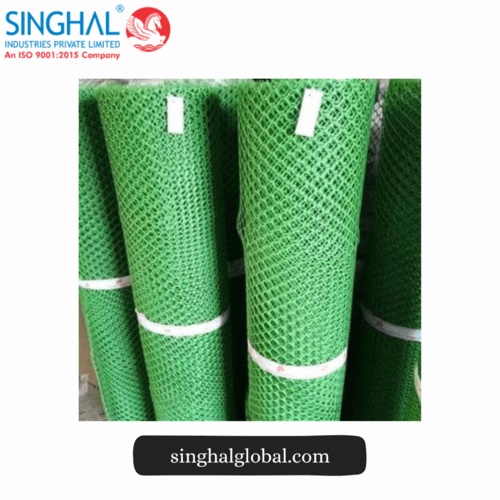Trees are the lungs of our planet, providing us with clean air, shade, and a habitat for countless species. Protecting young trees during their vulnerable early years is crucial for ensuring a healthy urban forest and a thriving environment. Plastic tree guards play a vital role in this process, safeguarding saplings from various threats and fostering their healthy growth.
The Need for Tree Guards
Newly planted trees face a multitude of challenges that can hinder their development. These include:
1. Rodents and Animals: Rabbits, deer, and other animals can gnaw on bark, hindering growth and potentially killing the tree.
2. Weed Competition: Weeds compete with young trees for water and nutrients, stunting their development.
3. Mechanical Damage: Accidental damage from lawnmowers, trimmers, or vandalism can seriously injure or kill young trees.
4. Environmental Factors: Exposure to harsh sunlight or extreme weather conditions can stress young trees.
Plastic Tree Guards: A Proven Solution
Plastic tree guards offer a practical and effective solution to these challenges. They are typically constructed from high-density polyethylene (HDPE) or polyvinyl chloride (PVC), both durable and weather-resistant materials. These guards act as a protective barrier, offering a range of benefits for young trees:
1. Physical Protection: The guard shields the trunk from gnawing animals and accidental damage from lawn equipment.
2. Weed Suppression: The guard creates a barrier around the base of the tree, preventing weeds from competing for vital resources.
3. Microclimate Creation: The guard can create a slightly warmer and more humid microclimate around the sapling, promoting faster growth.
4. Sun Protection: Some guards are designed with a shade component to shield young trees from excessive sunlight.
Choosing the Right Plastic Tree Guard
There are various types of plastic tree guards available, each with its own advantages:
1. HDPE Tree Guards: HDPE Tree Guards are highly durable, flexible, and resistant to cracking or breaking. They are a popular choice for their longevity and ability to withstand harsh weather conditions.
2. PVC Tree Guards: PVC tree guards are a more cost-effective option, offering good protection against rodents and basic weather elements. However, they may be less flexible and more susceptible to cracking in extreme temperatures.
3. Spiral Guards: These spiral-shaped guards offer a flexible and lightweight option that is easy to install. They are ideal for protecting against rodents and mild weed competition.
4. Fluted Guards: Fluted guards have vertical grooves that allow for better air circulation around the tree. This helps to prevent moisture build-up and promotes healthy bark development.
Factors to consider when choosing a tree guard include:
1. Size of the tree: The guard should be large enough to accommodate the current size of the tree and allow for future growth.
2. Climate: For colder climates, HDPE is a better choice due to its superior flexibility.
3. Budget: PVC guards are generally more affordable, but HDPE offers greater durability.
4. Desired features: Some guards have additional features like ventilation holes or shade tops.
Proper Installation and Maintenance
For optimal effectiveness, tree guards need to be installed correctly and maintained regularly. Here are some key points to remember:
1. Installation: Follow the manufacturer's instructions for proper installation. Ensure the guard is not too tight around the trunk and allows for future growth.
2. Stakes or Anchors: Use appropriate stakes or anchors to secure the guard in place, especially in windy areas.
3. Monitoring: Regularly inspect the tree and the guard for any signs of damage or constriction.
4. Removal: Once the tree is established and the trunk diameter exceeds the guard's capacity, carefully remove the guard to prevent girdling (restricting growth).
Conclusion
In conclusion, plastic tree guards, particularly HDPE and PVC varieties, offer a significant advantage in safeguarding the growth of young trees in urban landscapes. They provide essential protection from physical damage, animal browsing, weed competition, and even harsh weather elements. Choosing the right guard type and proper installation ensure optimal benefits for the sapling. While environmental considerations regarding plastic are valid, responsible sourcing, proper disposal, and the long-term benefits of healthy trees contribute to a more sustainable future. Ultimately, plastic tree guards serve as a valuable tool in nurturing a greener tomorrow by fostering the growth of healthy, thriving urban forests.
Frequently Asked Questions (FAQs)
Q1. Are plastic tree guards bad for the environment?
A1. While plastic production does have environmental concerns, responsible sourcing and proper disposal are crucial. Choosing recycled plastic guards and ensuring their proper disposal at the end of their lifespan can minimize environmental impact. Additionally, the long-term benefits of healthy tree growth contribute significantly to a greener environment.
Q2. Do all trees need tree guards?
A2. Tree guards are most beneficial for newly planted trees in urban environments or areas with high rodent activity. Mature trees or trees planted in natural settings may not require guards.
Q3. How long should I leave a tree guard on?
A3. Typically, tree guards should be left on for 2-5 years, depending on the growth rate of the tree. Regularly monitor the tree and remove the guard when the trunk outgrows the space.


No comments yet